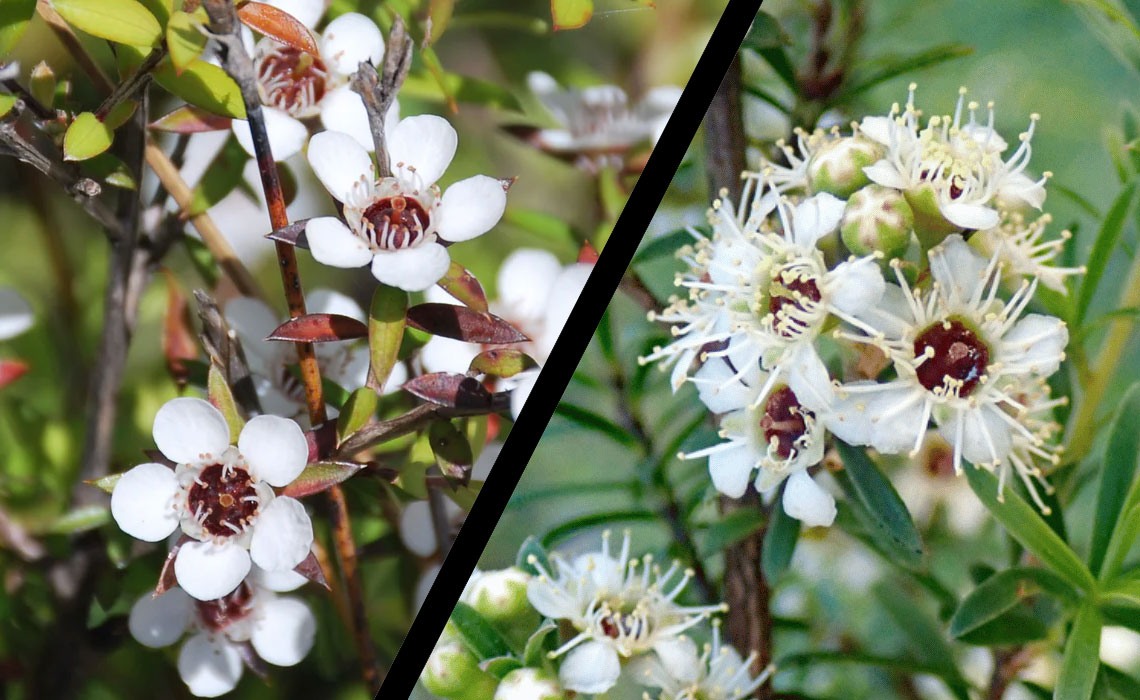
Skin Benefits of Mānuka and Kānuka
Unlock the secret to stunning skin with the power of Mānuka and Kānuka! These two supercharged botanicals are the hidden gems of natural skincare, offering a wide array of incredible benefits. If you're tired of struggling with stubborn skin issues or seeking a natural alternative to chemical-laden products, it's time to discover the wonders of Mānuka and Kānuka.
Mānuka, a native plant of New Zealand, has been celebrated for centuries for its potent antibacterial and anti-inflammatory properties. Its unique ability to combat acne, eczema, and other skin ailments makes it a must-have ingredient in any skincare routine. On the other hand, Kānuka, a close relative of Mānuka, possesses outstanding healing and rejuvenating qualities. It's rich in antioxidants and essential fatty acids, providing deep hydration and protecting against free radicals, leaving your skin radiant and youthful.
In this article, we will unveil the hidden secrets behind these remarkable plants and dive into their exceptional skin benefits. Find out how to incorporate Mānuka and Kānuka into your skincare regimen and experience the transformative effects firsthand. Say goodbye to dull and lackluster skin and embrace the natural beauty that Mānuka and Kānuka can bring.
Habitat:
To understand the preferred habitats of kānuka and mānuka, we need to look at their unique environmental requirements and distributions across New Zealand.
Kānuka :
Kānuka trees typically thrive in areas that balance between being dry and semi-fertile. They are commonly found in environments that range from warm-temperate to the cooler sub-alpine zones. However, it's important to note that kānuka does not naturally occur in the more southern regions of New Zealand like South Westland, Fiordland, Southland, or Stewart Island.
Mānuka:
Mānuka, on the other hand, is notably adaptable and robust, capable of growing in less forgiving conditions. This resilience allows mānuka to flourish in a variety of harsh environments, including nutrient-poor soils and coastal areas exposed to salt spray. This versatility explains why mānuka can be found more extensively across New Zealand, in contrast to the more geographically restricted kānuka.
Each species showcases a clear preference for different habitats, which highlights the diverse ecological niches they occupy within New Zealand’s landscape.
Mānuka and kānuka trees differ significantly in their mature heights. Mānuka trees typically reach heights of about 8 to 10 meters when fully grown. On the other hand, kānuka trees grow much taller, usually attaining heights between 20 to 30 meters. The substantial height advantage of kānuka allows it to thrive in denser forest environments, outliving and overshadowing the shorter mānuka. This notable difference in height reflects their adaptability and role within their respective ecosystems.
The Difference Between Mānuka and Kānuka
While Mānuka and Kānuka are often confused due to their similar names, they are distinct botanical species with unique characteristics. Mānuka, scientifically known as Leptospermum scoparium, is a shrub or small tree that grows in the wild landscapes of New Zealand. It is prized for its medicinal properties and has been used for centuries by indigenous communities for its healing benefits.
On the other hand, Kānuka, also known as Kunzea ericoides, is another native plant of New Zealand that belongs to the Myrtaceae family. Kānuka is known for its slender branches and small white flowers, which attract bees for honey production. While both Mānuka and Kānuka share some similarities in terms of their therapeutic properties, they each offer unique skincare benefits that cater to different skin concerns.
Understanding the distinction between Mānuka and Kānuka is essential for choosing the right skincare products that align with your skin's needs. By recognizing the specific qualities of each botanical, you can tailor your skincare regimen to harness the full potential of Mānuka and Kānuka for optimal skin health.
Understanding the Healing Properties of Mānuka and Kānuka
Mānuka and Kānuka are prized for their exceptional healing properties, which can benefit a wide range of skin conditions and concerns. The antibacterial and anti-inflammatory properties of Mānuka make it a potent remedy for acne, eczema, and other inflammatory skin conditions. Its ability to reduce redness and swelling while promoting healing makes it a versatile ingredient in skincare formulations.
Kānuka, on the other hand, offers outstanding healing and rejuvenating qualities that can help repair damaged skin and restore its natural balance. Rich in antioxidants and essential fatty acids, Kānuka nourishes the skin from within, promoting cellular regeneration and enhancing skin elasticity. Its ability to protect against free radicals and environmental stressors makes it a valuable ally in maintaining youthful and radiant skin.
When combined, Mānuka and Kānuka create a powerhouse duo that addresses multiple skin concerns simultaneously, providing a holistic approach to skincare. Whether you're looking to soothe irritated skin, combat signs of aging, or simply enhance your skin's overall health, incorporating Mānuka and Kānuka into your daily routine can help you achieve the glowing complexion you've always desired.
Products in our range that feature these amazing New Zealand natives are Kawanuka Oil and the Kawakawa with Manuka and Kanuka Balm, why not give them a try and enjoy the benefits of these wonders?


